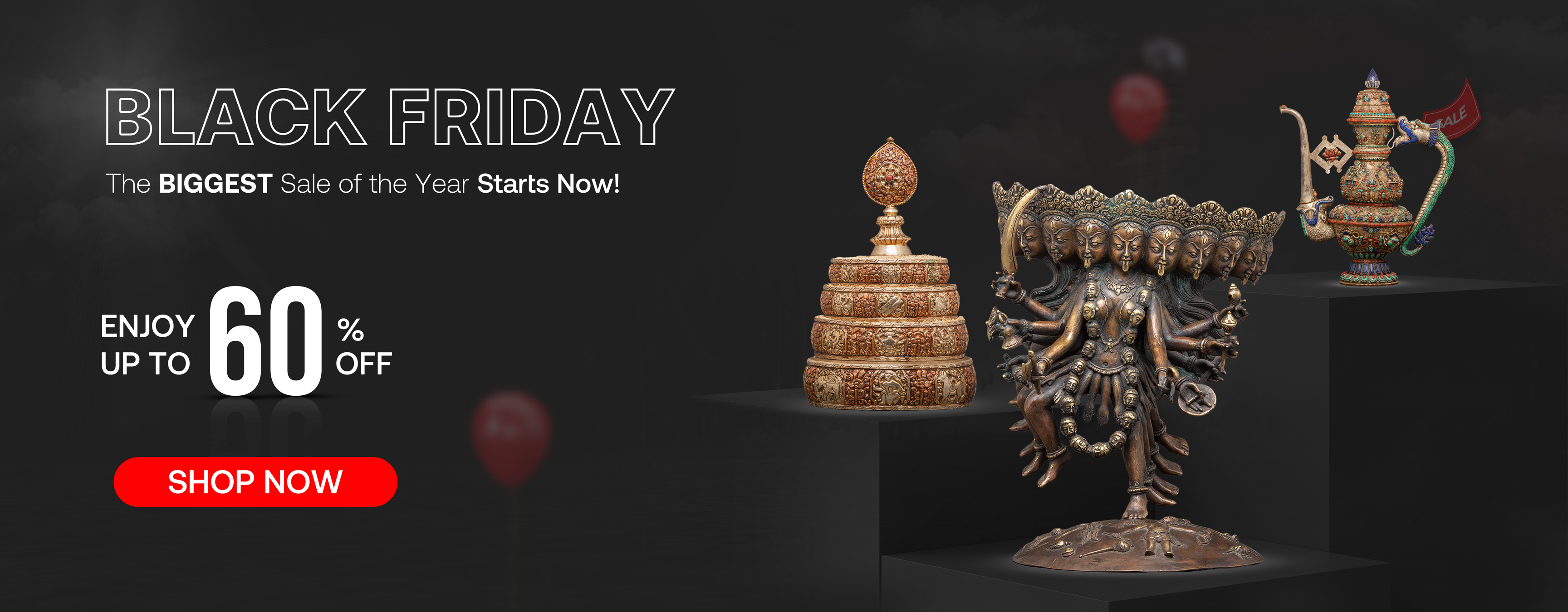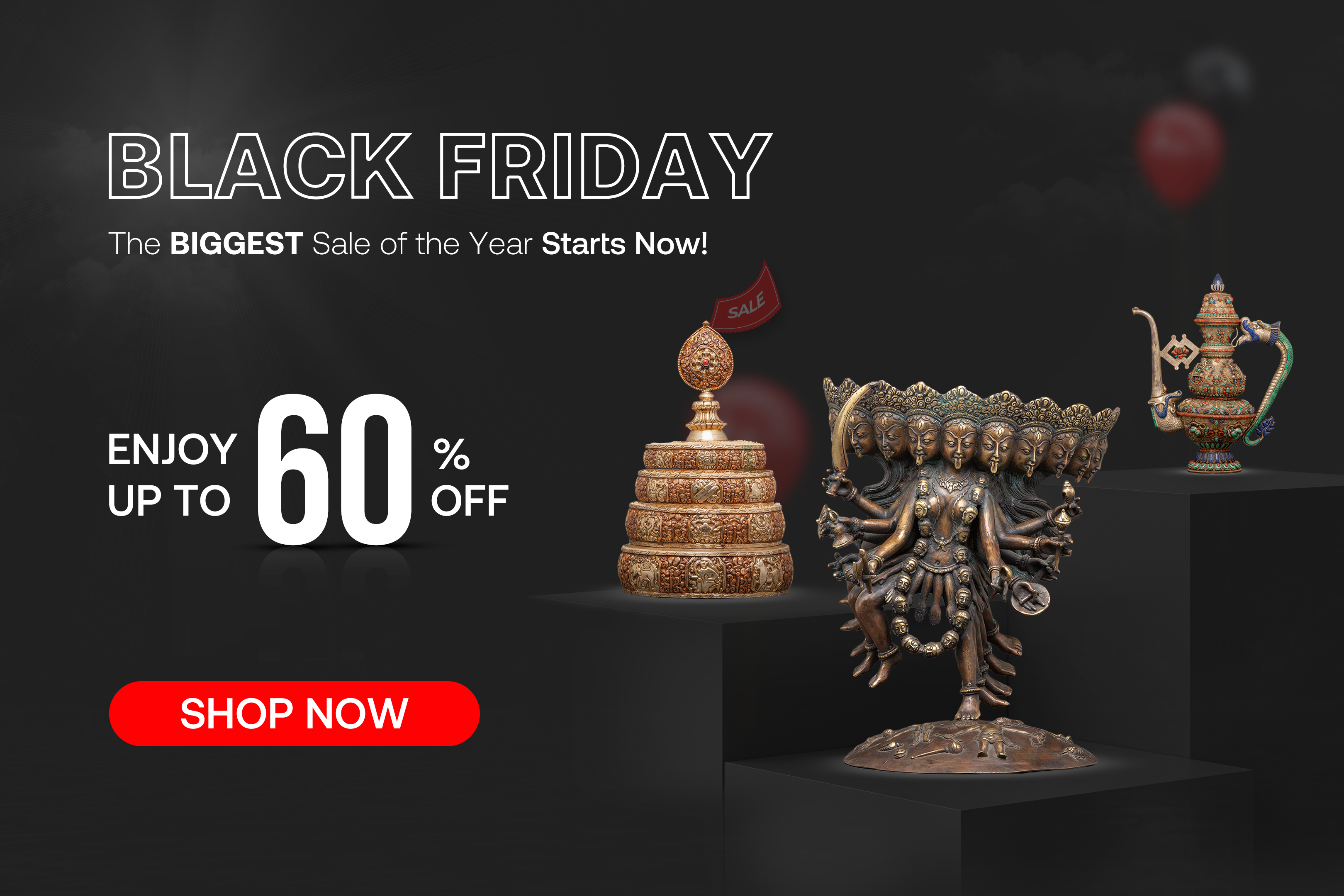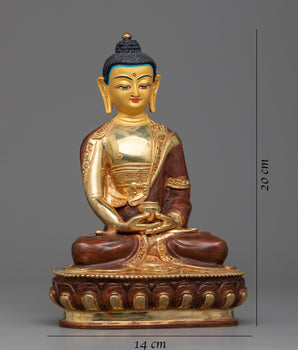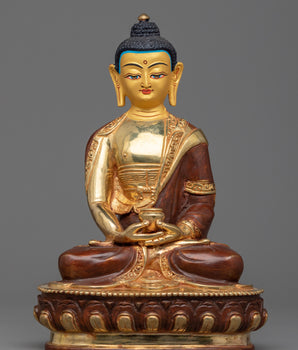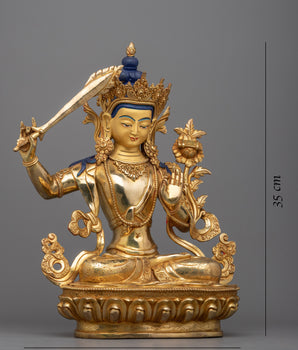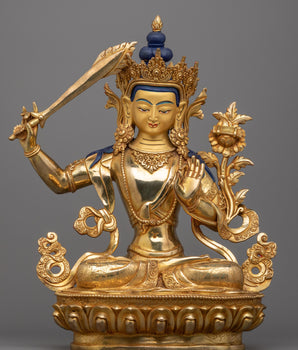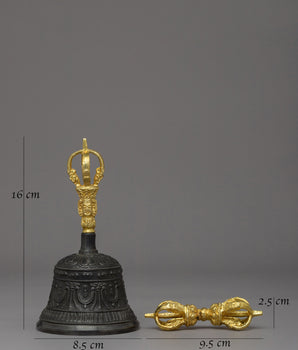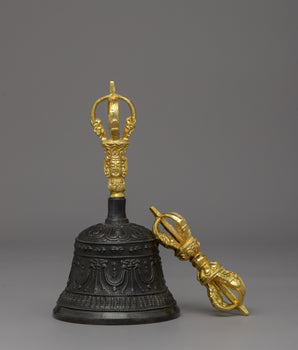Elevate Your Home with the Art, Culture, and Spiritual Presence of Buddha Statues
In the modern, hustle-and-bustle environment where stressful events surround us, our homes would be far more than just houses made of bricks and cement; they would serve as our refuge to rejuvenate our energies and help us reconnect with ourselves. Being able to create and maintain a space that allows for tranquility and balance is not just a luxury but is instrumental to our mental and emotional health. Interior decorating is a significant step towards promoting this inner stillness. The Buddha images have been used as art, but also as reminders of peace, loving kindness, and mindfulness, serving as general reflections that remind the viewer of the presence of spiritual power in life for centuries.
A Buddha statue can encourage countless moments of pause and mindfulness, foster connections to meditation and spiritual practice, emanate a calming energy that elevates the vibrational quality and ambiance of the space, and serve as daily reminders of kindness, patience, and wisdom. A Buddha sculpture can be a focal point in meditation corners, living spaces, and study areas. The proper placement of a statue can transform your room and the overall shape of your home.
Evamratna: The Unity of Art and Spirituality

At Evamratna, we respect the rich cultural and spiritual meanings that lie behind every Buddha statue. Each statue is crafted by an artisan who takes care and consideration in their work, creating each piece with skill and expertise, and developing their own unique technique. Our range consists of various forms and examples, including the Meditating Buddha and the Standing Buddha. This diversity makes a statue speak to every aspect of the folk.
Buddha statues are a symbol of peacefulness and mindfulness that have spread centuries of wisdom, bringing these statues into your home and helping to enrich your body and mind with the qualities of the person who has one of the most impressive lives in the history of humanity.
Benefits of Adding a Buddha Statue Indoors
A statue of Buddha is more than just an ornament; it symbolizes peace, compassion, and mindfulness. When placed in your family or living room, meditation spot, or study, it can shift the energy of that space. A Buddha holds that gentle reminder to pause, gain perspective, and stay rooted, even in the fastest of times. This journey will ultimately lead you to your own personal sense of serenity and emotional well-being. For any meditator, a Buddha statue serves as a focus point, allowing them to strengthen their focus and further develop stillness during meditation. These art pieces also have a positive influence and peaceful energy that surrounds your space, creating a warm and harmonious environment in which to expand and grow.
The statue embodies fundamental concepts such as simplicity, wisdom, and compassion, which can serve as a daily source of inspiration and guidance.
Various Forms of Buddha Statues Indoors
The significance of Buddha statues is individual, and each depicts a separate element of Buddha's life or teaching. Selecting the right one for you allows you to create a beautiful home intentionally. Below, we discuss the meaning of each form in greater depth.
1. Meditating Buddha (Dhyana Mudra)

The Meditation posture of Buddha is one of the most recognizable representations of inner peace, focus, and balance. This posture evokes the feeling of deep meditation, especially when we remember the Buddha's time under the Bodhi tree and the attainment of his enlightenment. The Meditating Buddha is a universal reminder to discover stillness within ourselves. It is relevant for those of us who want peace of mind and serenity in our hectic lives.
Iconography
- Form: Sitting in the lotus position, both hands in the lap, right hand over left, palms upward.
- Attributes: Usually depicted seated on a lotus throne, which symbolizes purity and transcendence.
- Appearance: Calm facial expression, with eyes fully or partially closed, radiating a feeling of peace.
- Symbolizing: To represent the act of meditative balance of enlightenment.
2. Teaching Buddha (Dharmachakra Mudra)

The Teaching Buddha signifies the moment in which Buddha first gave his public discourse. He also represents the Turning of the Wheel of Dharma and all Buddhas. Wisdom and knowledge. This form evokes clarity of thought, understanding, and knowledge.
Iconography
- Form: Usually depicted sitting or standing while engaging in the Dharma Chakra mudra at the heart center.
- Attributes: Sometimes depicted with a halo, with students, or with a symbolic wheel.
- Appearance: Tranquil and collected with a calm face that exhibits authority and compassion.
- Symbolizing: Wisdom, teaching, knowledge, spirituality, and compassion.
3. Reclining Buddha

The Reclining Buddha is a portrayal of the Buddha at the moment when the sage relinquishes this world, on the threshold of entering Nirvana through death, as a symbol of non-worldly peace, the absence of attachment and suffering, and compliance with one of the major principles of Buddhism: the principle of impermanence. It is also one of the reminders that prompts people to think about the impermanence of life and exhibit inner calmness in its acceptance.
Iconography
- Forms: The reclining figure on the right side, head weight on the right hand, limbs long and relaxed.
- Attributes: A lotus seat, lotus motifs of the Bodhi tree, or some other sacred symbol surrounding the figure.
- Appearance: Gentle smile, calm, representative of transcendence and peace.
- Symbolisms: Perseverance, bravery, or achieving spiritual awakening and overcoming obstructions.
4. Earth-Touching Buddha (Bhumisparsha Mudra)

This interpretation of the Buddha illustrates the moment he called the Earth to witness his enlightenment, demonstrating determination, strength, and victory over personal struggles. This pose shows the action the Buddha used to gain enlightenment under the Bodhi tree at that moment.
Iconography
- Form: Seated in meditation with the left hand resting in the lap, and the right hand reaching towards the earth.
- Attributes: A lotus throne, Bodhi tree designs, or other sacred symbols that surround the figure.
- Appearance: Often depicted in a state of concentration and serenity with a halo or representation of an enlightened aura.
- Symbolism: Determination, courage, or attaining spiritual awakening and overcoming obstruction.
5. Standing Buddha

The Standing Buddha embodies grace, protection, and comfort. He can symbolize a blessing, assurance, or calming insight with his hand posture (mudra). This form evokes compassion while maintaining a sense of strength and resilience.
Iconography
- Form: Upright and one hand raised in Abhaya Mudra (gesture of reassurance and protection).
- Attributes: Draped robes, often a halo, or possibly a symbolic lotus pedestal.
- Appearance: A gentle, yet authoritative expression, giving a sense of reassurance and peacefulness.
- Symbolism: Protection, courage, blessings, reassurance.
6. Laughing Buddha (Budai)

The Laughing Buddha, also referred to as Budai, represents happiness, abundance, and prosperity. Although this figure is not the historical Buddha, he encourages individuals to be nimble, lighthearted, and ultimately to spread joy. Budai reminds the practitioner to be joyful in this life.
Iconography
- Form: A plump and joyful being that also sometimes carries a sack, beads, or children.
- Attributes: Emphasis on a large stomach, peace, satisfaction, and happiness; a blissful face with loose arms, and a casual posture.
- Appearance: Happy, merry, friendly.
- Symbolism: perseverance, bravery, or achieving spiritual enlightenment and overcoming hindrance.
7. Medicine Buddha (Bhaisajyaguru)

The Medicine Buddha encompasses healing, compassion, and protection from the effects of illness. It promotes both physical and spiritual healing, fostering a sense of holistic care and balance.
Iconography
- Form: Seated, mostly holding a bowl of nectar medicine or healing herbs.
- Attributes: Blue body indicating healing energy, Medicine Buddha usually has a halo or sits on a lotus throne.
- Appearance: Calm, compassionate, and aware.
- Symbolism: Healing, compassion, protection, and spiritual rejuvenation.
Quick Reference: Position & Purpose
|
Buddha Statues |
Best Place |
Why these Buddhas |
|
Meditating Buddha |
Meditation room, study, or peaceful stay |
Supports focus, balance, and peaceful energy. |
|
Teaching Buddha |
Study, library, or educational spaces |
Promotes wisdom, clarity, and growth in learning. |
|
Reclining Buddha |
Living room or hallway |
Embodiment of peace and acceptance. It provides a space for contemplation on the journey of life. |
|
Earth-Touching Buddha |
Living room or close to the front door |
Represents strength, enlightenment, and conquering challenges. |
|
Standing Buddha |
Entrances, hallways, or a focal point |
Sends out strength, protection, and reassurance. |
|
Laughing Buddha |
Anywhere to come into the home or the living room |
The presence of joy and abundance attracts prosperity into the home. |
|
Medicine Buddha |
Wellness spaces, healing spaces, or an altar |
Aids in health, healing, and compassionate energy. |
Cultural and Regional Meaning of Buddha Statues in Nepal

Across the globe, Buddha statues have profound religious, cultural, and artistic meaning. Although the heritages of Siddhartha Gautama and the Buddha can be found in many areas of Asia, the beautiful images from Nepal are especially unique due to being the primary context of devotion for centuries by local devotees, artisans, and tourists. A statue is intended to be used for meditative purposes by the person who makes it. It represents cultural heritage in a general sense; the Buddha image has an explicit, longstanding meaning within a spiritual context.
Buddha by Nepali Artists
Buddha statues from Nepal are renowned for their exquisite details, a foundation of serenity, and symmetrical proportions. They conjoin artistic influences from India, Tibet, and the local Newar. The style of these statues can be described as exquisite, harmonious, and spiritual. These include, but are not limited to, seated posture representations for meditation, postures representing standing figures, and images of the Earth-Touching Buddha, which means the moment of enlightenment.
Commonly seen features of Nepali Buddha statues include elongated earlobes on the sides of the head, a gentle smile, and an urna emerging from the center of the top of the forehead. These features epitomize wisdom, compassion, and spiritual insight and understanding, respectively. Some other standard features of many statues are the crown or embellished robes, which are often found in Tantric Buddhist practices, emphasizing the divine and sacred identity characteristics of a Buddha.
Conclusion: Invite Calm, Compassion, and Balance into Your Daily Life
A Buddha statue in your home is more than just an aesthetic choice; it is an invitation to mindfulness, peace, and spiritual balance in your everyday life. Whether you take home a Meditating Buddha to a contemplative space, a Standing Buddha to put by the front door, or a Laughing Buddha to invite positive energy, each statue has its own characteristics and unique energy guidance. The production of these statues in Nepal is an enduring artistic tradition that combines devotion, artistry, and heritage, passed down from artisans who have been crafting them for centuries. As a result, they are both spiritual objects and works of art. With careful consideration when placing the statue, respecting its nature, and learning about it, you are entering a living space that cultivates calmness, inspiration, and balance.
In these uncertain times, A home is a living space. However, bringing a Buddha statue into your home means bringing centuries of guiding wisdom and positive energy, so that your home can vibrate with contemplation, compassion, and peacefulness, becoming a true sanctuary amidst the chaos of life.
Explore Our Collection of Buddha Statues from Evamratna.






